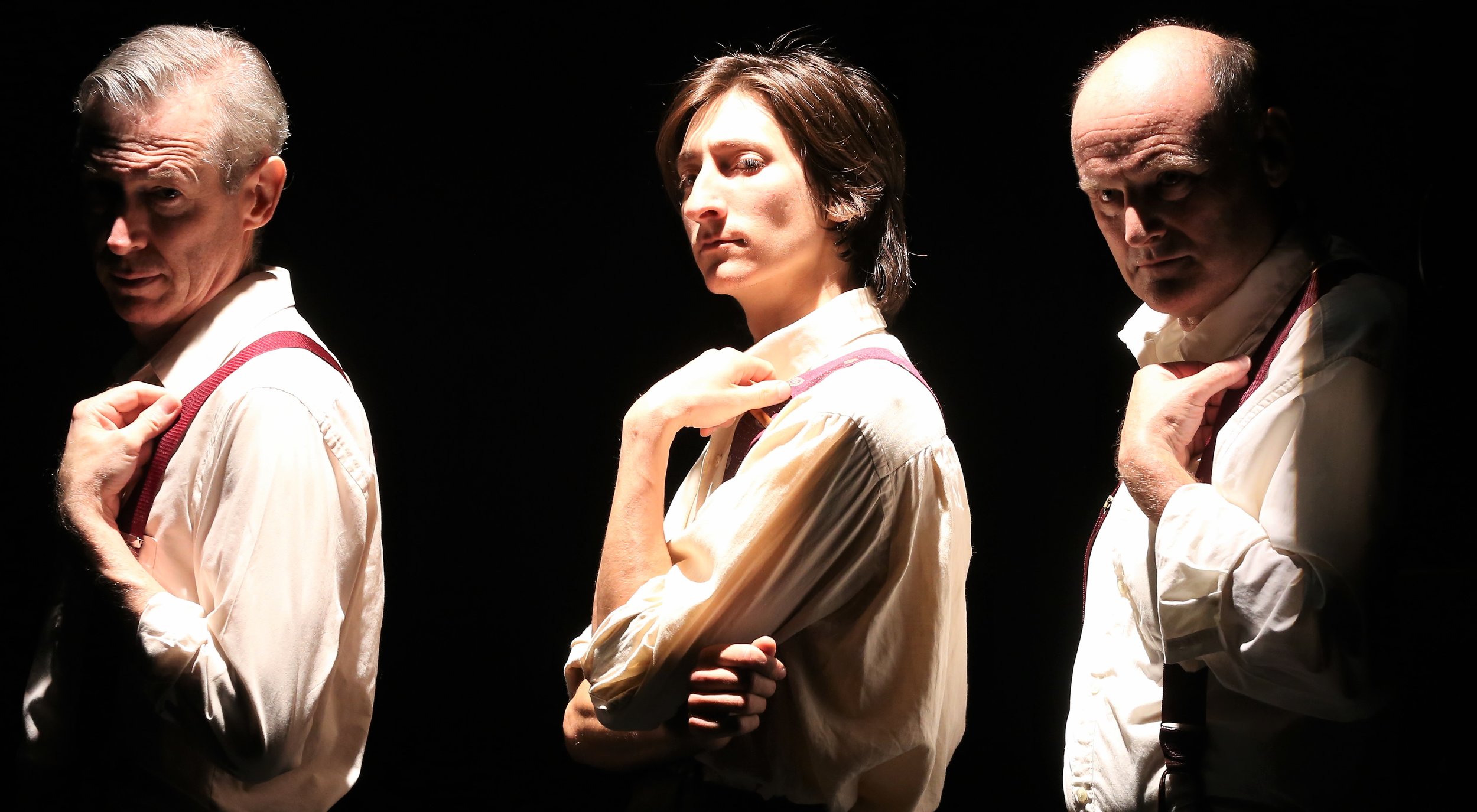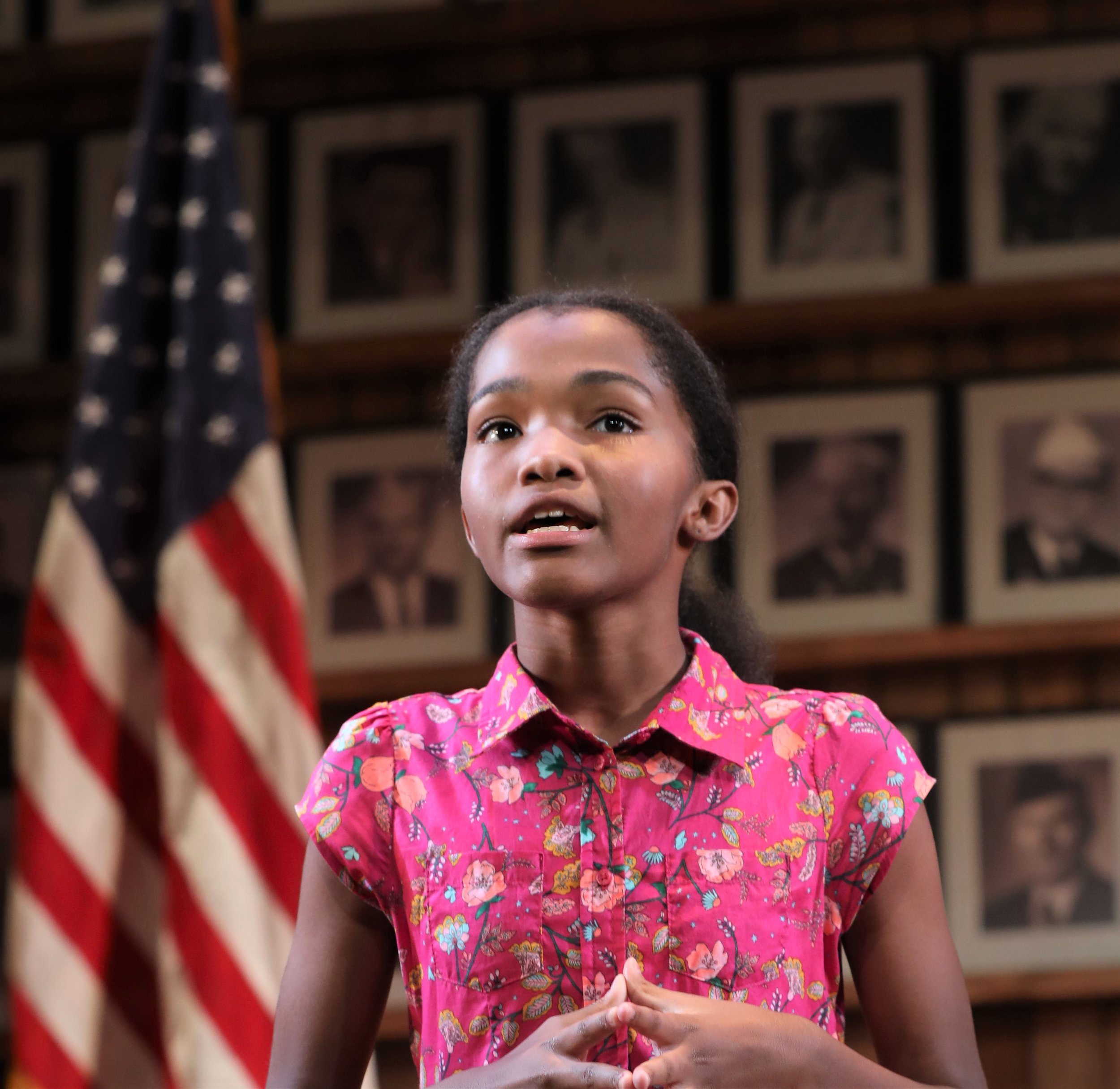Aficionados of the bleak works of Irish playwright Samuel Beckett may want to pay a visit to the Irish Rep’s production of On Beckett. But be advised that a passion for the author is a helpful prerequisite. Actor-comedian Bill Irwin takes a deep dive into the works of the Nobel Prize–winning playwright—he calls it a “personal memoir.” Irwin proves a trustworthy guide through several of Beckett’s works, from the world-famous Waiting for Godot to the obscure work Stories and Texts for Nothing.
At the start, Irwin says wryly, “My knowledge of Samuel Beckett’s work is deep. In places.” One of those places is Waiting for Godot, a peak of modern dramatic literature. Irwin played Lucky in the 1988 Broadway production with Steve Martin and Robin Williams, and he shares a story or two about it; the character of Lucky is mostly silent except for a burst of energy in a rambling five-minute speech. In a 2009 Broadway revival he played one of the two tramps, Vladimir, to Nathan Lane’s Estragon. Even though Irwin may be best-known as a silent clown like Charlie Chaplin or Buster Keaton, his dramatic bona fides are also rock-solid. He won a Tony Award in 2005 as George, opposite Kathleen Turner in Edward Albee’s Who’s Afraid of Virginia Woolf? All those talents come into play in On Beckett.
Bill Irwin indulges in baggy-pants clowning for his performance of On Beckett; it contrasts with the grimness of other passages (top).
At the Irish Rep, Irwin performs on a nearly bare stage, and most of the show is a solo turn. (For the last moments of Godot he brings on a young actor, Finn O’Sullivan, who plays the boy who appears at the end of both acts to announce that Godot isn’t coming, but he will be there the following day.)
Irwin addresses the minutiae of Beckett scholarship, starting with pronunciation. Is the title character pronounced God-OH or GOD-oh? (The British prefer the latter pronunciation; the former is generally American.) He says that he used to pronounce it the American way until the Broadway production, directed by the British Anthony Page.
“Why does this writing call me?” he asks. “All I can say is we were taught to emulate Socrates—my generation—good liberal arts citizens. Taught to emulate Socrates—except for the suicide—and the gay sex—but we were urged to examine our lives—lest they be found not worth living.”
While Irwin eventually tackles Waiting for Godot, he delves into the much less-known Texts for Nothing, a series of numbered prose monologues, bringing out the poetry and the bleakness in the works:
The graveyard, yes, it’s there I’d return, this evening it’s there, borne by my words, if I could get out of here, that is to say if I could say, There’s a way out there, there’s a way out somewhere, to know exactly where would be a mere matter of time, and patience, and sequency of thought, and felicity of expression. But the body, to get there with, where’s the body? It’s a minor point, a minor point. And I have no doubts, I’d get there somehow, to the way out, sooner or later, if I could say, There’s a way out there, there’s a way out somewhere, the rest would come, the other words, sooner or later, and the power to get there, and the way to get there, and pass out, and see the beauties of the skies, and see the stars again.
And Irwin’s analysis of this long passage is as erudite as you’d find in a college seminar:
Those last lines echo the final lines of Canto 34 of Dante’s Inferno—as the characters climb back up from Hell: “And so we came up and once again beheld the stars.” And that line is the epigraph in William Styron’s book Darkness Visible—A Memoir of Madness. About severe depression. “Darkness visible” is a line of Milton’s, from Paradise Lost. There seem to be some shared touchstones for all who have descended to a hell, and returned.
Irwin discusses the importance of various hats used by Beckett characters. Photographs by Carol Rosegg.
To leaven Beckett’s grim worldview, Irwin brings spoonfuls of sugar with his own expert clowning into play. He dons baggy pants, an oversize coat and various hats—a boater, a bowler (standard issue for the tramps in Godot) and a porkpie, among others. Physically, he slouches, wambles, and stands straight, and at one point does a classic bit of business involving pressing a button at a podium that purportedly makes the podium rise or descend. There is no mechanical apparatus, of course: he is creating the illusion through his own extraordinary physical grace.
On Beckett is a perfect marriage of actor to material. Irwin loves it, and one can’t imagine a better guide, with more insight, into the touchstones of modernism that Beckett created.
Bill Irwin’s On Beckett runs through Nov. 4 at the Irish Repertory Theatre (132 West 22nd St., Manhattan). Evening performances are at 7 p.m. Tuesday and Thursday and at 8 p.m. Wednesday, Friday and Saturday; matinees are at 3 p.m. Wednesday, Saturday and Sunday. For tickets, call (212) 727-2737 or visit irishrep.org.




































